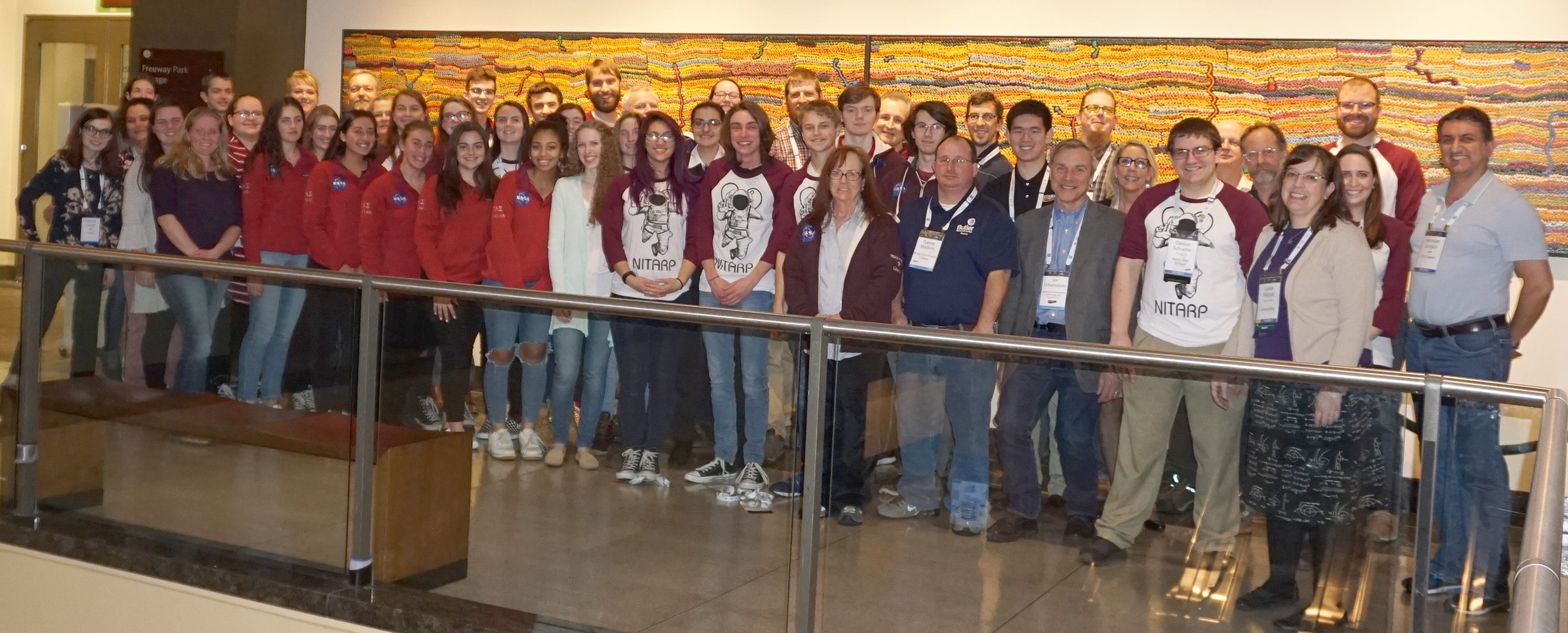
High school teachers and students doing real astronomy research? Absolutely!

Once again, more than 30 teachers, students and astronomy educators from the NASA/IPAC Teacher Archive Research Program (NITARP) will be attending the winter meeting of the American Astronomical Society (AAS), running from January 6 through January 10 in Seattle, WA.
For over a decade, NITARP has partnered small groups of educators with a research astronomer for original, year-long, authentic research projects. At the AAS meeting, the educators from the 2018 class, along with some of their students, are presenting the results of their work over the past year. Meanwhile, the educators from the 2019 class are meeting their teams and getting started on their own projects.
From NITARP’s early years through the 2019 class, a total of 116 educators from 37 states have participated or will participate; this year sees our first participants from Iowa and Mississippi. NITARP works with educators because, through them, NITARP reaches thousands of students per year with information about how science really works, what NASA does, and the wealth of astronomy data that is freely available to the public.
Here are the teams that are presenting posters at the AAS meeting this week:
2018 team working with Dr. Varoujan Gorjian (JPL/IPAC):
- Thomas Rutherford (Sullivan South High School, Kingsport, TN) – mentor teacher for the team
- David Friedlander-Holm (The Bay School of San Francisco, San Francisco, CA)
- Nick Goeldi (Ripon High School, Ripon, WI)
- Matt Nowinski (Loudon County Public Schools, Ashburn, VA and The Boeing Company, Washington, DC)
- Alissa Sperling (Springside Chestnut Hill Academy, Philadelphia, PA)
This team made use of Spitzer Space Telescope data obtained from the entirety of the cryogenic-era – that is, from the first 5.5 years of the Spitzer mission. They then combined it with newly released data from the Gaia spacecraft and looked for objects with unusually high infrared luminosities.
2018 team working with Dr. Luisa Rebull (IPAC):
- Laura Orr (Ukiah High School, Ukiah, OR) – mentor teacher for the team
- Nancy Coster (Kankakee Valley High School, Wheatfield, IN)
- Debbie Morgan (South Sevier High School, Monroe, UT)
- Laura Wommack (Lakeside Jr-Sr High school, Plummer, ID)
This team looked for young stars in a region called L1688. It is part of a large molecular cloud that is home to 1000s of baby stars. Using long wavelength data from the Herschel Space Telescope, and combining it with data from a variety of places, including the Spitzer Space Telescope, and the Two Micron All-Sky Survey, this team looked for the youngest YSOs in this region, finding 3 new young star candidates.
The 2018 educators will now go on to conduct at least 12 hours of professional development for their colleagues in their schools and communities, at the local, regional, and national levels, in print and in person.
NITARP is announcing today the 2019 class of educators and their teams, as follows:
2019 team working with Dr. Varoujan Gorjian (JPL/IPAC):
- Vin Urbanowski (Academy of Information Technology & Engineering, Stamford, CT) – mentor teacher for the team
- Andrea Galloway (Thomas Jefferson High School, Council Bluffs, IA)
- Geoff Holt (Madison Metropolitan School District Planetarium, Madison, WI)
- Noah Kearns (Mitchell High School, Mitchell, IN)
2019 team working with Dr. Luisa Rebull (IPAC):
- David Strasburger (Concord Academy, Concord, MA) – mentor teacher for the team
- Michael Bechtel (Wartburg College, Waverly, IA)
- Danny Mattern (Butler Community College, El Dorado, KS)
- Bob Swanson (Itawamba Community College, Tupelo, MS)
They will present their results, with their students, at the 2020 AAS winter meeting to be held in Honolulu, HI.
IPAC, based at Caltech, in Pasadena, CA, is leading this program. These teams use archival data from the Spitzer Space Telescope (part of the Spitzer Heritage Archive, SHA), the NASA/IPAC Extragalactic Database (NED), the NASA Exoplanet Archive, the NASA/IPAC Infrared Science Archive (IRSA), all of which are based at IPAC, and other NASA archive holdings. Funding comes from the NASA Astrophysics Data Program.
- Date: January 9th, 2019
- Category: Project News
- View Image
- Image Caption: NITARP participants from the classes of 2018 and 2019, plus self-funded alumni from past classes, at the January 2019 American Astronomical Society meeting in Seattle, WA.


